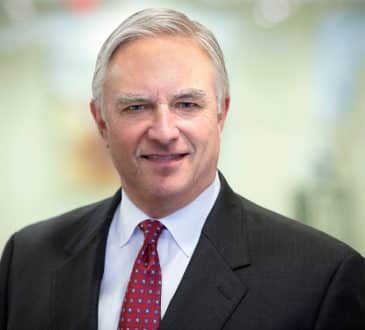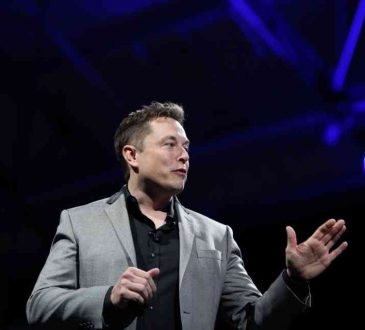Solving the Productivity Puzzle: Six Questions You Need to Answer, Now

Economists are stumped. We have the most advanced technology in human history yet are currently mired in the longest and most sustained period of declining people productivity since measurement began in the early 20th century. The decline began in 2010, while we were in the throes of the “Great Recession” and has continued ever since. Surely the coronavirus pandemic has not helped this, right? So, what should you do? I recommend that you ask yourself the following questions and see how you rate your organization, and then think about how you can close the gaps to solve the productivity puzzle.
Question 1: Do you have the right people, with the right skills, in the right place, at the right time, with the right motivation?
Organizations that have all this are top performers, creating people engagement, innovation and performance. As the ancient poet Rumi said: “Everyone has been made for some particular work, and the desire for that work has been put in every heart.” Who doesn’t want to work in an organization that strives to position its workforce for success and enjoyment on the job? Companies like Accenture, IBM, Google, and SAP have advanced capabilities in this space and perform accordingly, not only in share-price performance but also in people-engagement scores.
Question 2: Do you strive to balance people’s intrinsic and extrinsic motivations?
The 21st-century workplace is quite different from the industrial-age workplace. Today, people are as motivated by what they do (intrinsic motivation) as they are by pay (extrinsic motivation). Today, most people work in offices, not on a shop floor producing widgets or on a farm harvesting food. Back in the day, it’s true, the more you paid people, the more they would produce. However, today’s modern workplace is more complicated, and cash bonuses have the opposite effect, focusing people on their bonus rather than the work. A mix of cash and non-cash rewards and a purpose-led organization that people buy into are essential in motivating today’s workforce. It is well past time to rethink how we motivate and reward people.
Question 3: Do you have an effective employee well-being program?
These days, looking after the health of your workforce is more important than ever. The amount of investment in well-being programs has nearly doubled in the past five years. However, even the smallest efforts can have a big payoff. For example, you can encourage employees to stay hydrated during the day, which can improve their brain processing function by up to 20%. Effective well-being programs are not just about physical health, but also mental and financial health. Helping your workforce create a healthy mind and body can pay big dividends in performance, reduction in sick days, and improved retention of top talent.
Question 4: Is Your Workplace “Human Centric”?
Does your workplace experience look and feel more like the year 2000 or the year 2020? Most organizations are still desk-based office environments where everyone uses a PC with a mouse and a keyboard on a MAC or Windows operating system. However, at home people use voice-activated devices, mobile devices with helpful apps connected to the internet 24/7. They use consumer-grade technology that makes their lives easier and more productive—more human centric. With people working much more from home these days, they are starting to notice the difference. Today’s workplace technology solutions are made for the IT and HR departments, to help the organization with compliance and process standardization, not to improve performance. You should upgrade your workplace experience to be more like the home environment, where the technology people use is simple, human centric and makes them more productive.
Question 5: Are You Leveraging the Innovation of “Different” Brains?
Neurodiverse individuals bring a different way of looking at things, driving innovation in products and services as well as new ways of working. Neurodiversity is group of conditions such as ADHD, dyspraxia, dyscalculia and autism, which are not “abnormal” or “diseases,” but simply variations of the human brain that are a natural part of the tapestry of human variety. The trick, and the opportunity, is to learn how to leverage neurodiverse individuals’ unique talents to everyone’s benefit. This is an untapped pool of talent, and many companies have learned how to tap into the thought patterns and work ethic that are common among neurodiverse individuals. Companies such as Microsoft, Walgreens and German-based software giant SAP have had, for more than more than four years now, programs specifically recruiting people who have autism or related differences.
Question 6: The Machines are Coming: Will You Harness Them Effectively?
What would the work world be like if we could use technology and technological changes to our advantage by aligning people to intelligent machines, helping them do more with less? Throughout history, humans have successfully harnessed machines to make themselves more productive while improving their income and standard of living. As digital technology becomes more and more intelligent, we should welcome the help. However, we do risk overwhelming people with new machines, which can create fear and dysfunction. The key is developing a plan to introduce intelligent technology over time, and to focus it on specific quick wins that improve the customer experience and the employee experience while reducing costs. Communicate the plan so that people understand what is happening now and why, and where you are going. Avoid the “shiny new object” syndrome, in which an organization is constantly running after the latest gadget or software.
Hopefully you were able to rate your organization highly against these questions. But don’t worry—if not, you are not alone. Many of these suggestions are new trends only recently emerging, so there is still time to ride the wave. The key is creating your plan to close the gaps, which will help solve your productivity puzzle, once and for all.
Hav eyou read?
The World’s Best Luxury Superyacht Charters And Builders
Luxury Superyacht charter in Greece and the Greek Islands.
World’s Most (And Least) Expensive Cities For Taxis.
World’s Best Cities For Business Travel.
Add CEOWORLD magazine to your Google News feed.
Follow CEOWORLD magazine headlines on: Google News, LinkedIn, Twitter, and Facebook.
This report/news/ranking/statistics has been prepared only for general guidance on matters of interest and does not constitute professional advice. You should not act upon the information contained in this publication without obtaining specific professional advice. No representation or warranty (express or implied) is given as to the accuracy or completeness of the information contained in this publication, and, to the extent permitted by law, CEOWORLD magazine does not accept or assume any liability, responsibility or duty of care for any consequences of you or anyone else acting, or refraining to act, in reliance on the information contained in this publication or for any decision based on it.
Copyright 2024 The CEOWORLD magazine. All rights reserved. This material (and any extract from it) must not be copied, redistributed or placed on any website, without CEOWORLD magazine' prior written consent. For media queries, please contact: info@ceoworld.biz
SUBSCRIBE NEWSLETTER








